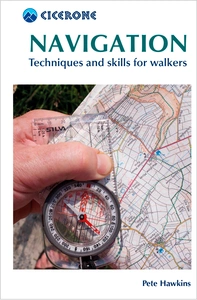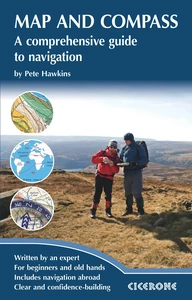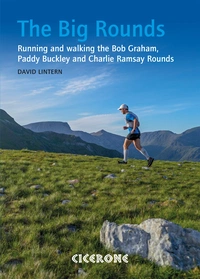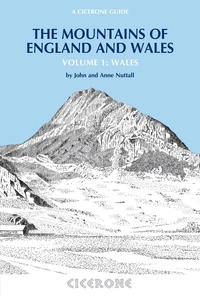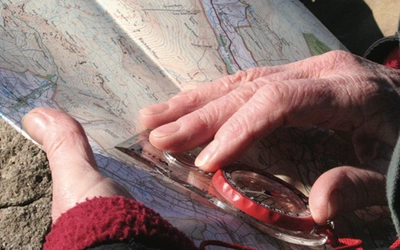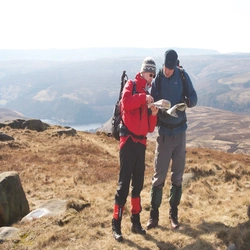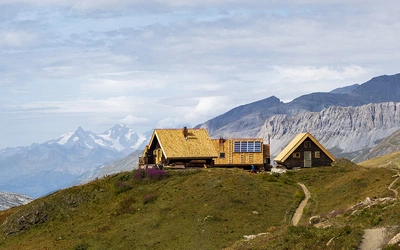Skills session - using a compass
Cicerone author and navigation expert Pete Hawkins shares his knowledge and experience on how to successfully and safely navigate at home and abroad. The compass. A humble instrument that is probably in the rucksack of most outdoor adventurers, from the Sunday walker to the multi-day expeditioner. Here, he explains how to use one.
The compass. A humble instrument that is probably in the rucksack of most outdoor adventurers, from the Sunday walker to the multi-day expeditioner. It is one of the core essentials that also includes the map, penknife, first aid kit, spare laces and spare socks!
The compass is also probably the most misunderstood piece of kit in the walker’s armoury. Of the thousands of walkers I’ve met in 35 years of teaching navigation, the vast majority carry one but haven’t got a clue what to do with it.
Let’s start simply. The red end of the needle, assuming you’re not holding it near another metallic object, points north (magnetic north). Bringing in the map now and we all know that the top of the map is also north (grid north). So lay your compass on top of your map and turn your map and compass around until the red end of the compass is pointing to the top of the map and voila, you have set your map.
I’ve seen so many walkers, and I have done it myself I’ll confess, set off on a walk in the wrong direction. Setting your map before you start will ensure you avoid this embarrassment. In fact, whenever you look at your map, quickly resetting it will cut down on your navigation errors many-fold. (Figure 1)
Phew, that wasn’t hard, was it. Let’s take that idea a step further. As your walk progresses, you arrive at a junction of two paths. On the ground you’re not entirely sure which one to take. Simple. Whip out your map and compass (actually, they should be in your hand anyway, so you can refer to them constantly) and on your map lay the edge of the compass along the line of the path you need to take. Now as you did before, turn yourself, map and compass around until the red end of the needle points to the top of the map.
The Direction of Travel arrow will now be pointing along the line of the path you need to take on the ground. (See Figure 2 to see what the different parts of the compass are called)

Using a compass is as easy as that. Go out and practice it. You don’t have to go far, or even to unfamiliar territory. A local route is fine, so long as you have a map. (Many local country parks have orienteering maps available from their cafés or visitor centres. Do a search for Permanent Orienteering Courses; you’re bound to find something nearby.)
What we’ve just covered is all pretty straightforward and simple but, before we move on, consider this. Ask an orienteer, who combines map reading and compass use to speedily navigate their way round complicated courses, how they use their compass and you’ll discover that the above pretty much coincides with what they do. If it’s good enough for them…
Advanced compass skills
The reason why the compass has traditionally been an object of confusion is the way it’s been taught for years. Navigate yourself to a course offering an NNAS accredited qualification and you’ll discover the proper, progressive way of learning compass skills.
A compass, while being technically simple, can enable accurate navigation across complex, featureless terrain. The problem in the past has been that this method has been taught pretty much from the get-go and not once the compass has become a familiar and friendly object.
Essentially, what a compass does is measure the angle between north, where you are and where you wish to go, which if you drew these lines on a map you could achieve with a school protractor. The north a map uses is grid north; your compass uses magnetic north. The difference between these two is known as the Declination or, more simply, Magnetic Variation (MV). In the UK, at present, the MV is so small it can be effectively ignored when navigating, as will be the case for the next 15 years or so. However, if you are exploring abroad it is wise to find out what the MV is. In California, it is in the region of 13oE; you’d ignore this difference at your peril.
Measuring a bearing is pretty straightforward. (figure 3)
- Place the edge of the compass between where you are and where you wish to go to
- Turn the compass housing (notice this is the first time in this piece I’ve said to turn the housing) so the housing arrow points north and the orientating lines are parallel to the vertical grid lines
- Read the bearing off against the direction of travel arrow
It’s at this stage if you were in an area of significant MV, you would add or subtract the MV off this bearing. If Magnetic north is West of grid north you use the following:
From Grid to Mag Add
And if it is East, remember that Grandma Sucks Easily (Grid - Mag Subtract East).
All that’s left now is to walk on your bearing to your next destination. Check on the map how far away it is, and holding the compass correctly (Figure 4), turn yourself and compass around until the red end of the needle coincides with the housing arrow and look along the direction of travel arrow. This is the direction you need to, erm, travel in. Find an object that lies on this line, walk to it and repeat the process until you reach your destination.
Again, a local park or orienteering course is an ideal place to practice this, because the points are closer together than they would be on a 1:25,000 map.
There are a host of other techniques that can be employed as well as taking bearings that ensure you stay on track, which are beyond the scope of this short piece. Check out my book Navigation; Techniques and Skills for Walkersfor details and join me on a navigation course to turn the written word into a useful and practical skill that will make your days in the hills more enjoyable and safer.
Navigation
Techniques and skills for walkers
£9.95
This pocket handbook to navigation will help you master the necessary map and compass skills for mountain walking. Chapters include map scales, symbols and contours, grid references, map reading, bearings, route planning and night and bad-weather navigation, as well as navigating with a GPS.
More information

